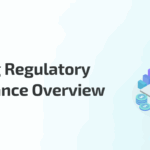How do industry-specific factors influence the structure of bank project reports?
Securing a bank loan is a pivotal step for any small business in India, and a well-prepared project report is your most important tool. But a one-size-fits-all approach simply doesn’t work. Banks scrutinize every detail, and what they look for heavily depends on the industry your business operates in. The risks, opportunities, and key performance indicators vary drastically between a manufacturing plant, a software company, a retail store, and a construction project. Lenders are trained to spot generic reports and often view them as a sign of an unprepared or inexperienced promoter. A report that isn’t tailored to your specific sector fails to address the unique questions and concerns a banker will have, significantly reducing your chances of success.
This comprehensive guide will break down the significant influence of industry factors on bank reports. We will explore how to move beyond a generic template and strategically tailor your report to your specific sector, highlighting the right metrics and addressing potential risks head-on to increase your chances of loan approval. Understanding these nuances is the key to preparing effective banking project reports in India that resonate with lenders and present your business in the best possible light. A well-crafted, industry-specific report demonstrates not only the viability of your project but also your deep understanding of the market you operate in, which is a crucial factor in building a lender’s confidence.
Understanding the Foundation: What is a Bank Project Report?
Before we delve into the industry-specific customizations, it’s essential to understand the fundamental purpose and components of a bank project report. At its core, a project report is a comprehensive document that outlines your business plan, its objectives, technical feasibility, and financial viability. It serves as your business’s resume, presenting a compelling case to the bank that your venture is a sound investment and that you have a clear plan to generate sufficient profits to repay the loan. It’s not just a collection of data; it’s a narrative that must convince the lender of your competence and the project’s potential for success.
The standard project report structure in banking sector India provides the framework upon which you will build your industry-specific details. Think of these components as the skeleton of your report; they must be present and robust, but the real substance comes from the industry-specific details you flesh them out with.
Key Components of a Standard Project report
- Executive Summary: A powerful, concise overview of the entire project. This is often the first—and sometimes only—section a busy bank manager reads in detail, so it must be compelling and summarize your project’s highlights, loan requirement, and repayment capacity.
- Promoter/Management Profile: A detailed look at the business owners. This includes their educational qualifications, relevant industry experience, track record, and personal financial background. For a new business, the strength of the promoters is a primary consideration for the bank.
- Project Details & Objectives: A clear description of the business, what it does, and the specific purpose of the loan. Whether it’s for expanding an existing facility, purchasing new machinery, funding working capital, or starting a new venture, this section must be precise.
- Market Analysis: A thorough assessment of the industry landscape, your target market size and demographics, and a realistic analysis of your competition. This demonstrates that you have done your homework and understand the market environment.
- Technical & Operational Plan: This section details the “how” of your business. It includes information on the machinery and technology to be used, the production process, raw material sources, and the strategic advantages of your business location.
- Financial Projections: The financial heart of your report. This must include:
- Projected Profit & Loss (P&L) Statement: Forecasting your revenue, expenses, and profitability over the next 3 to 5 years.
- Projected Balance Sheet: Forecasting your business’s assets, liabilities, and equity to show its financial position over time.
- Projected Cash Flow Statement: A critical statement showing the movement of cash from operating, investing, and financing activities. To do this correctly, you may need to Set Up An Accounting System for My Small Business.
- Repayment Schedule (DSCR): This includes the calculation of key financial ratios, most importantly the Debt Service Coverage Ratio (DSCR), which shows your ability to generate enough cash to cover your debt payments.
The Critical Influence of Industry Factors on Bank Reports: A Sector-Wise Breakdown
Here’s where we move from a standard template to a winning proposal. The structure of bank project reports influenced by industry factors is what truly sets a successful loan application apart from the rest. Lenders are experts in risk assessment, and their analysis is fine-tuned for each sector. They need to see that you not only have a solid business plan but that you also possess a deep understanding of the unique variables, challenges, and success drivers of your specific industry. Presenting a report that speaks their language demonstrates your expertise and builds immense credibility.
Let’s break down how to tailor your project report for some of the major sectors in India.
1. Manufacturing Sector: Emphasizing Production, Assets, and Compliance
The manufacturing sector is capital-intensive, focusing on the conversion of raw materials into finished goods. A bank’s primary concern here is the value and efficiency of your physical assets, your ability to manage a complex production process, and your adherence to regulatory norms. Your project report must provide concrete, verifiable details about your operational plan and fixed assets. Generic statements won’t suffice; you need to provide a granular breakdown that leaves no room for ambiguity.
- How to Structure Your Report:
- Detailed Cost of Project: Don’t just list “Plant & Machinery.” Provide a detailed, itemized list of each machine, its supplier, cost, and technical specifications. Similarly, break down the costs for land acquisition, site development, building construction, and other fixed assets. This detailed list serves as the basis for the bank’s valuation.
- Means of Finance: Clearly outline the financial structure. Show the exact amount of the promoter’s contribution (margin money) and how it will be infused into the project. This demonstrates your personal stake and commitment.
- Working Capital Requirement: Manufacturing involves a complex working capital cycle. You must detail your calculations for holding inventory (raw materials, work-in-progress, finished goods) and managing accounts receivable (debtors). A well-justified working capital assessment shows financial foresight.
- Production Capacity & Utilization: Be realistic. Instead of projecting 90% capacity utilization in year one, provide a phased plan (e.g., 50% in Year 1, 65% in Year 2, 80% in Year 3) and justify these figures based on market demand and operational ramp-up time.
- Compliance & Licenses: Manufacturing is heavily regulated. You must explicitly mention and, if possible, attach copies of necessary approvals, such as the MSME UDYAM REGISTRATION, factory license, and especially environmental clearances like the Pollution Control Board (PCB) certificate. This is a prime example of industry-specific factors bank project reports India must address to be taken seriously.
2. Service Sector (e.g., IT, Consulting, Hospitality): Highlighting Expertise and Operational Costs
Unlike manufacturing, the service sector often has minimal tangible assets. The bank isn’t lending against machinery; it’s investing in your team’s expertise, your ability to acquire and retain clients, and the scalability of your operations. Therefore, your project report must shift its focus from physical assets to human capital and market strategy. The narrative needs to build confidence in your team’s ability to generate consistent revenue streams based on their skills and knowledge.
- How to Structure Your Report:
- Promoter’s & Team’s Expertise: This is your most valuable asset and should be a highlight of the report. Go beyond simple CVs. Detail the specific qualifications, certifications, and, most importantly, the past achievements and track record of key personnel. Include case studies or testimonials if possible.
- Client Acquisition Strategy: A vague “we will do digital marketing” is not enough. Detail your sales funnel. Explain your strategy for lead generation, conversion, and client retention. If you have any existing contracts, service agreements, or even strong letters of intent (LOI), include them as annexures.
- Detailed P&L Projections: Since operational expenses are a major component, break them down meticulously. Instead of a single line for “Salaries,” list the costs for different roles. Detail your marketing budget, office rent, software subscription costs, and other key overheads.
- Intellectual Property: In the knowledge economy, IP is a key asset. If your business has any proprietary software, unique methodologies, registered trademarks, or copyrights, showcase them prominently. This illustrates how industry factors affect bank reports in India when the primary assets are intangible.
3. Trading & Retail Sector: Focusing on Inventory, Sales Cycles, and Location
For businesses involved in trading or retail, the game is all about managing the flow of goods and cash. The bank’s primary focus will be on your working capital cycle, your ability to manage inventory efficiently, and the commercial viability of your business location. Profitability in this sector is driven by turnover and margin, so your project report must demonstrate a firm grasp of these core operational metrics.
- How to Structure Your Report:
- Working Capital Cycle Analysis: Show that you understand your cash conversion cycle—the time it takes to convert your inventory investment back into cash. Detail your inventory holding period, debtor collection period, and the credit period you receive from your suppliers. This analysis proves your understanding of the cash flow dynamics of your business.
- Inventory Management Plan: Address the key risks of this sector. How will you manage your stock to avoid obsolescence, damage, or stockouts? Detail your inventory management system, whether it’s a simple FIFO/LIFO method or a sophisticated software-based system.
- Supplier & Customer Credit Terms: Be specific. List your key suppliers and the credit terms they offer. Similarly, outline the credit policy you will have for your customers. This directly impacts your working capital projections.
- Location Analysis: For a physical retail store, this is paramount. Don’t just state the address. Provide data on daily footfall, local demographics, proximity to competitors, and accessibility. A strong location analysis can significantly strengthen your proposal.
- Sales Projections: Your revenue forecasts must be grounded in reality. Base them on tangible metrics like expected daily footfall, estimated customer conversion rate, and the average ticket size or purchase value.
4. Real Estate & Construction: Detailing Project Timelines & Regulatory Approvals
The real estate and construction sector is characterized by long project cycles, high capital requirements, and a heavy regulatory burden. Banks are extremely cautious due to the inherent risks related to project delays and regulatory hurdles. Your project report must be exceptionally detailed, transparent, and, most importantly, fully compliant with all legal requirements.
- How to Structure Your Report:
- Regulatory Approvals: This is the most critical element and is non-negotiable. Your report must include copies of all essential approvals, such as land title deeds, land use conversion (if applicable), building plan sanctions from the local authority, and the RERA registration certificate.
- Actionable Tip: Always provide a direct reference to your project’s registration on the official RERA website for your state. For example, a project in Maharashtra should be verifiable on the MahaRERA website.
- Project Implementation Schedule: Provide a detailed, phase-wise timeline using a Gantt chart or a similar project management tool. This should map out every stage, from site excavation and foundation work to structural completion, finishing, and handover, with clear start and end dates for each activity.
- Cost & Funding Plan: Present a meticulous breakdown of construction costs (civil work, plumbing, electrical, finishing, etc.) certified by a qualified architect or engineer. Crucially, provide a clear funds-flow statement showing how the promoter’s capital and the bank’s loan disbursements will be utilized at each specific stage of the project.
- Sales & Booking Status: To mitigate the sales risk, provide concrete evidence of market acceptance. Include details on any pre-launch bookings, expressions of interest received, and a clear marketing and sales strategy to achieve the projected sales velocity.
- Regulatory Approvals: This is the most critical element and is non-negotiable. Your report must include copies of all essential approvals, such as land title deeds, land use conversion (if applicable), building plan sanctions from the local authority, and the RERA registration certificate.
Performing a Robust Bank Reports Analysis in India: The Financial Story
After structuring the narrative part of your report, your financial projections must tell the same, industry-specific story. A generic forecast with arbitrary growth numbers is a major red flag for any lender conducting a bank reports analysis in India. Your financial statements must be a logical extension of your operational plan and be firmly grounded in the norms and realities of your industry.
Tying Revenue Forecasts to Industry Norms
Your revenue projections should be built from the bottom up, based on drivers specific to your sector.
- Manufacturing: Your revenue formula is (Total Installed Capacity) x (Projected Capacity Utilization %) x (Price Per Unit). Each of these variables must be justified.
- Services: Revenue can be based on (Number of Billable Employees) x (Billable Hours) x (Hourly Rate), or (Number of Clients) x (Average Contract Value), or a recurring revenue model based on subscriptions.
- Retail: Forecasts should be based on (Retail Area in sq. ft.) x (Projected Sales per sq. ft.) or (Expected Daily Footfall) x (Conversion Rate %) x (Average Transaction Value).
Aligning Cost Structure with Your Sector
Your cost structure should also reflect your industry’s operational model.
- Manufacturing: Expect high fixed costs due to depreciation on plant & machinery, alongside significant variable costs like raw materials and power.
- Services: The largest cost is typically variable—employee salaries. Fixed costs like office rent are present but usually form a smaller percentage of total costs compared to manufacturing.
- Retail: The primary cost is the Cost of Goods Sold (COGS). Other significant variable costs include rent (often tied to revenue), marketing, and sales staff commissions.
Conclusion: Your Industry is Your Roadmap
Creating a generic, one-size-fits-all project report is a common but critical mistake that can jeopardize your funding prospects. The lender is not just funding a project; they are investing in a promoter who understands their business environment inside and out. To secure funding, you must demonstrate a deep and practical understanding of your industry’s specific dynamics, risks, and key success metrics. The influence of industry factors on bank reports is not just a minor detail—it’s the very core of a lender’s risk assessment and decision-making process. A tailored report shows that you are prepared, professional, and worthy of their investment.
Feeling overwhelmed? Crafting a report that speaks the bank’s language and persuasively presents your case is a specialized skill. TaxRobo’s experts specialize in preparing compelling, industry-specific project reports that get results. We understand the nuances lenders look for and can help you build a financial narrative that stands up to scrutiny. Contact us today for professional assistance with your banking project reports in India and take the next confident step towards achieving your business goals.
Frequently Asked Questions (FAQs)
1. Why can’t I use a standard online template for my bank project report?
While a standard template can provide a basic structure, it fails to highlight your unique business strengths and, more importantly, does not address the specific risks and financial drivers of your industry. Banks look for a customized bank reports analysis India-style, and a generic report often signals a lack of detailed preparation and deep industry knowledge to the loan officer, making it easier for them to reject your application. Seeking a Bank Loan for Startup Business requires this level of detail.
2. For a service business with no machinery, what is the most important part of the project report?
For service businesses, the “Promoter’s & Management Profile” and the “Market & Sales Strategy” sections are absolutely paramount. Since you have few tangible assets for the bank to hold as collateral, the bank is fundamentally investing in your and your team’s expertise and your documented ability to generate contracts and consistent cash flow. Your track record and client acquisition plan become your primary assets.
3. How many years of financial projections are required?
Typically, banks in India require 3 to 5 years of detailed financial projections. This must include a projected Profit & Loss Statement, Balance Sheet, and Cash Flow Statement for each year. Crucially, these projections should be accompanied by a separate “List of Assumptions” page that clearly explains the basis for your forecasts (e.g., assumed inflation rate, capacity utilization growth, marketing spend, etc.).
4. Where can I find reliable data for my market analysis?
Use a mix of primary and secondary sources for a robust analysis. Official government portals are excellent for credible macro data. Supplement this with industry-specific reports, competitor analysis from their annual reports (if public), and your own primary local research, such as customer surveys or location footfall counts.
- Actionable Tip: The Ministry of MSME website (https://msme.gov.in/) and various industry-specific ministry websites are great starting points for official reports and industry data.



